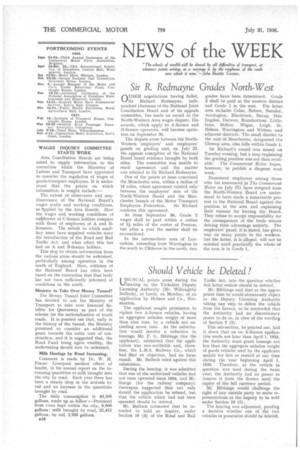WAGES INQUIRY COMMITTEE STARTS WORK.
Page 22

If you've noticed an error in this article please click here to report it so we can fix it.
Area Conciliation Boards are being asked to supply information to the committee which the Ministers of Labour and Transport have appointed to consider the regulation of wages of goods-transport employees. It is understood that the points on Which information is sought include:— The extent of observance and nonobservance of the National Board's wages scales and working conditions, as lpplied by the Area Boards. How the wages and working conditions of ernfiloyees of C-licence holders compare with those of employees of A and Blicensees. The extent to which ancillary users have acquired vehicles since the introduction of the Road and Rail Traffic Act, and what effect this has had on A and B-licence holders.
This step to obtain information from the various areas should -be welcomed, particularly among operators in the north of England. Here, criticism of the National Board has often been based on the contention that that body has not been sufficiently informed, of conditions in the north.
Ministry to Take Over Mersey Tunnel?
The Mersey Tunnel Joint Committee has decided to ask the Ministry of Transport to take over financial liability for Queensway as part of the schem.e for the nationalization of trunk roads. It is pointed out that, early in the history of the tunnel, the Ministry promised to consider an additional grant towards the extra cost of constructien, and it is suggested that, the Road Fund being again wealthy, the undertaking should now be redeemed.
Milk Haulage by Road Increasing.
Comment is made by Dr. W. M. Frazer. Liverpool medical officer of health, in his annual report on the increasing quantities of milk brought into the city by road. Each year there has been a steady drop in the arrivals by rail and an increase in the quantities brought by road.
The daily consumption is 46,300 gallons, made up as follow :—Produced from cows kept within the city, 9,900 gallons ; milk brought by road, 33,415 gallons; by rail, 2,985 gallons.
B16












































































